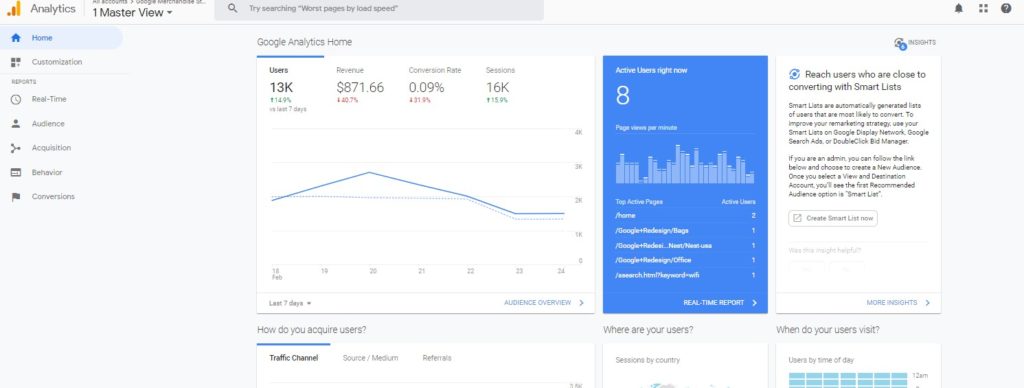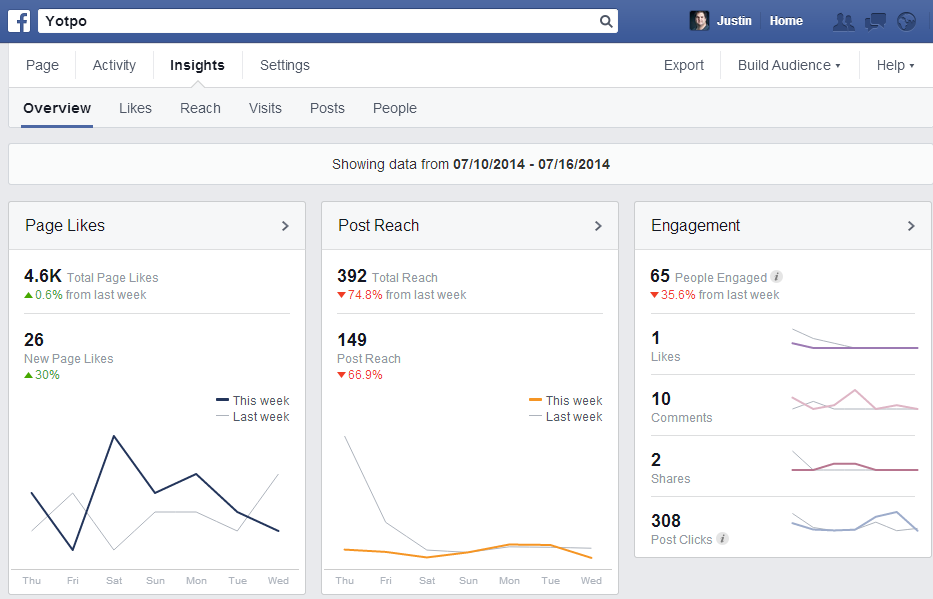what is e commerce analytics software ?
E-commerce analytics
software is a set of tools and platforms that help e-commerce businesses
understand customer behavior, optimize their sales funnel, and drive revenue
growth. It typically provides a variety of metrics and analytics such as
website traffic, user behavior, demographics, conversion tracking, user
engagement, funnels, retention and many more. These metrics and analytics help
e-commerce businesses to make data-driven decisions and improve their online
sales performance. Some examples of e-commerce analytics software include
Google Analytics, Mixpanel, Heap, Adobe Analytics, Amplitude, Kissmetrics,
Piwik PRO, and Hotjar. These tools can be used to track key performance
indicators (KPIs) such as website traffic, conversion rates, customer lifetime
value, and more. This information can be used to optimize the customer
experience, improve marketing efforts, and increase overall revenue.
why use e commerce analytics software
There are several
reasons why e-commerce businesses use analytics software:
- Understand customer behavior: E-commerce
analytics software provides detailed insights into how customers interact
with your website, including their browsing behavior, purchase history,
and demographics. This information can be used to improve the customer
experience, increase conversion rates, and boost sales.
- Optimize sales funnel: E-commerce
analytics software allows businesses to track key metrics such as website
traffic, bounce rates, and conversion rates. This information can be used
to identify bottlenecks in the sales process and optimize the customer
journey to increase conversions.
- Improve marketing efforts: E-commerce
analytics software can provide detailed information about the performance
of your marketing campaigns, including which channels are driving the most
traffic and conversions. This information can be used to optimize your
marketing efforts and increase ROI.
- Monitor and measure business performance:
E-commerce analytics software allows businesses to track key performance
indicators (KPIs) such as revenue, customer lifetime value, and return on
investment (ROI). This information can be used to monitor the overall
performance of the business and make data-driven decisions.
- Identify trends and patterns: E-commerce
analytics software can help businesses identify trends and patterns in
customer behavior, sales, and marketing efforts. This information can be
used to make informed decisions, such as identifying the most popular
products and the most successful marketing campaigns.
- Make data-driven decisions: E-commerce
analytics software provides businesses with the data they need to make
data-driven decisions. This allows businesses to make informed decisions,
such as identifying the most popular products and the most successful
marketing campaigns, rather than relying on intuition or guesswork.
- Cost-effective: Many e-commerce analytics
software are free or have low-cost plans, making them accessible to
businesses of all sizes.
e-commerce analytics
software is an essential tool for e-commerce businesses of all sizes. It can
help businesses understand customer behavior, optimize their sales funnel,
improve marketing efforts, monitor and measure business performance, identify
trends and patterns, and make data-driven decisions. Ultimately, it can help
businesses increase revenue and improve overall performance.
When it comes to
e-commerce analytics, having the right tools in place is crucial for
understanding customer behavior, optimizing your sales funnel, and driving
revenue growth. But with so many options available, it can be difficult to know
which software is the best fit for your business. After thorough research, we
have compiled a list of the top e-commerce analytics software that can help you
make data-driven decisions and boost your bottom line.
- Google Analytics: This free tool is a
must-have for any e-commerce business. It provides detailed insights into
website traffic, including user behavior, demographics, and conversion
tracking. You can also set up custom reports and track specific metrics,
such as average order value and time on site.
- Mixpanel: This advanced analytics tool
offers a range of features for tracking user engagement, funnels, and
retention. It allows you to segment your data by different criteria, such
as product or location, and provides detailed insights into how users
interact with your site.
- Heap: This automatic analytics tool tracks
all user interactions on your website, including clicks, form submissions,
and page views. This makes it easy to analyze customer behavior and
identify areas of improvement.
- Adobe Analytics: Formerly known as
Omniture, Adobe Analytics is a powerful tool that provides detailed
analytics for website performance, marketing campaigns, and customer
behavior. It also allows you to track key metrics such as revenue,
conversion rate, and customer lifetime value.
- Amplitude: This analytics tool is designed
specifically for product and growth teams, and offers insights into user
engagement and retention. It allows you to track user behavior across
multiple devices and platforms and provides detailed reports on user engagement
and conversion.
- Kissmetrics: This analytics tool provides
insights into user behavior, engagement, and conversion tracking. It also
allows you to segment your data by different criteria, such as product or
location, and provides detailed insights into how users interact with your
site.
- Piwik PRO: This open-source web analytics
platform gives you full control over your data and privacy. It offers
similar functionalities as Google Analytics, with the ability to track
website visitors, campaigns, and conversions, as well as custom reports.
- Hotjar: This all-in-one analytics and
feedback platform allows you to see how visitors are really using your
website and get insights to improve it. It provides heatmaps, session
recordings, and form analytics to help you understand user behavior and
identify areas for improvement.
Ultimately, the best
e-commerce analytics software for your business will depend on your specific
needs, budget, and level of technical expertise. It's important to evaluate
each option and determine which one will provide the most valuable insights for
your business.
6 types of data analytics
- Descriptive Analytics: This type of
analytics is focused on summarizing and describing the past performance of
a business. It provides a historical perspective of what has happened in
the past and includes metrics such as total sales, website traffic, and customer
demographics.
- Diagnostic Analytics: This type of
analytics is focused on understanding the reasons behind past performance.
It provides a deeper understanding of the causes of past events and
includes metrics such as customer lifetime value, conversion rates, and
customer satisfaction.
- Predictive Analytics: This type of
analytics is focused on forecasting future performance. It uses
statistical models and machine learning algorithms to predict future
outcomes and includes metrics such as sales forecasts, customer churn
rates, and lifetime value projections.
- Prescriptive Analytics: This type of
analytics is focused on finding the best course of action to achieve a
desired outcome. It uses advanced algorithms to analyze data and make
recommendations for future actions.
- Big Data Analytics: This type of analytics
is focused on processing and analyzing large sets of data, such as from
social media, IoT devices and other sources. It enables businesses to
uncover patterns and insights that would be difficult to detect using
traditional methods.
- Text Analytics: This type of analytics is
focused on processing and analyzing unstructured text data, such as social
media posts, customer reviews, and surveys. It can be used to understand
customer sentiment, identify key topics, and extract valuable insights.
It's worth noting that
these types of analytics are not mutually exclusive, and many analytics
software and platforms can provide multiple types of analytics. For example, a
platform that provides descriptive analytics may also provide diagnostic and
predictive analytics.





0 Comments